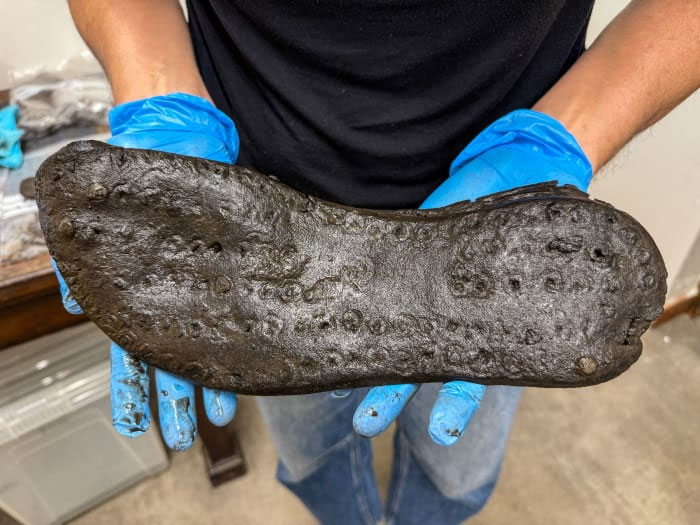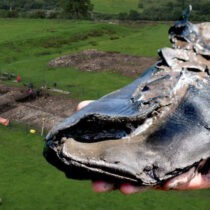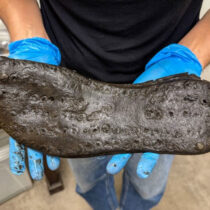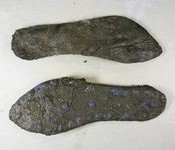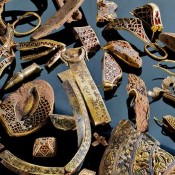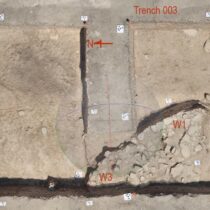With a collection of around 5,000 ancient leather shoes uncovered at Roman Vindolanda, the Vindolanda Charitable Trust has gained an amazing insight into the men, women and children who occupied this northern outpost from these very personal items of clothing. The collection includes tiny baby booties, elaborate summer sandals and marching boots. These ancient artefacts captivate the imagination about the sort of people who wore them nearly 2,000 years ago.
The Trust’s excavation at Magna Roman Fort, a significant five-year project funded with support from The National Lottery Heritage Fund, is now adding to that tally. This year the Trust’s archaeologists, supported by teams of volunteers from across the world, have been excavating the northern defensive ditches of the Fort. When the semi-anaerobic low oxygen deposits within the ditches were reached, the first of 32 shoes were uncovered.
It soon became apparent that some of these shoes were very large. The first exceptionally large shoe was reported in the team’s Magna Dig Diary on 21st May. At 32cm (UK size 13/14) the leather shoe sole attracted a lot of attention, its length ranking it as one of the largest in the Trust’s collection. As news spread of this giant single shoe, the team continued to discover more ancient shoes, several more of them being of an exceptional size. Eight shoes from Magna are now recorded as 30cm or over in length and this includes one which holds the current record for being the Trust’s largest shoe at 32.6cm long. From the shoes uncovered to date at Magna 25% are classed as xx-large (30cm+). In comparison, of the shoes uncovered at Vindolanda, and of which the size can be determined, only 0.4% of shoes are in the same category, with the average shoe size being a smaller 24-26cm in length.
Dr Elizabeth Greene, Associate Professor at the University of Western Ontario and Vindolanda’s shoe specialist, has seen and measured every shoe in the Vindolanda collection. Greene commented, “I think there is something very different going on here at Magna, even from this small sample uncovered it is clear that these shoes are much larger on average than most of the Vindolanda collection”. Dr Greene noted that “although we are comparing this new Magna collection which has not yet gone through the conservation process with the Vindolanda shoes that have, even taking into account a maximum shrinkage of up to 1cm/10mm, it still means these shoes are very large indeed.”
Every shoe in the Vindolanda Trust’s collection is unique, each one giving us an immediate connection with the person who wore it. In addition to the extra-large shoes, the Magna collection includes a range of other sizes, including those belonging to children.
Rachel Frame, Senior Archaeologist at the Magna Project commented: “Organic finds like this are some of the most precious to come from our sites, which capture the imagination of visitors and volunteers alike, but they are also the most at risk from our changing climate. We are grateful to have the support from The National Lottery Heritage Fund, made possible by National Lottery players, who have enabled the Magna project to be realised – there is much more to discover about the people who lived at Magna and to understand about the impact climate change is having on this hugely important historical resource.”
Dr Andrew Birley, the Trust’s CEO and Director of Excavations, added “this really shows us what is at risk if climate change continues to rob us of such vital information. It reminds us that not every population was the same, that wide variations between the regiments and people who served along Hadrian’s Wall, could be cultural and physical. Without artefacts like these wonderful shoes from Magna and Vindolanda, it would be almost impossible to know information like this. We can only celebrate and marvel at the diversity and differences of these people if we can still see them in the archaeological data we gather today”.

